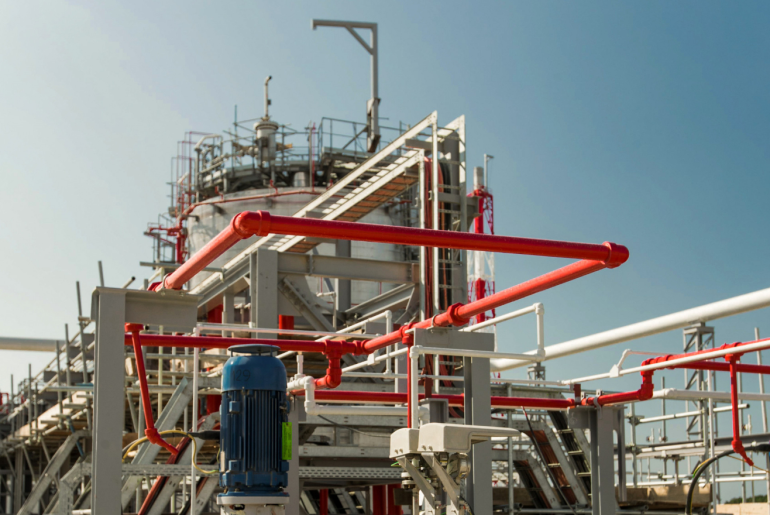In the energy sector like oil and gas, power, and petrochemical, organizing asset hierarchy and structure is critical for sustainable energy practices. Discover how it not only enhances reliability but also facilitates innovative solutions to meet the growing demands of the industry.
What Is Asset Hierarchical Structure?
Asset Hierarchy is a structured way of organizing a logical index of all your maintenance equipment, machines, and components, based on their characteristics and importance. Think of it like arranging your belongings on shelves, where each shelf represents a specific category of assets.
The goal is to manage these assets effectively, considering factors like liquidity, stability, and growth potential. With this organized approach, individuals and businesses can make informed decisions about their financial resources, ensuring a balanced and optimized portfolio.
Why Is Asset Hierarchy Important?
In the dynamic landscape of the energy sector, Asset Hierarchy plays a pivotal role in ensuring operational efficiency and reliability.
1. Organized Management
Asset Hierarchy provides an organized framework for managing diverse components and equipment within the energy infrastructure. This systematic arrangement enables quick access, streamlined operations, and effective utilization of resources.
2. Optimized Operations
By categorizing assets based on their characteristics and importance, Asset Hierarchy allows for strategic planning and optimization of energy operations. This ensures that resources are allocated efficiently, contributing to enhanced overall performance.
3. Reliability Assurance
In the energy industry, reliability is paramount. Asset Hierarchy helps in identifying critical components and prioritizing their maintenance. This proactive approach minimizes downtime, ensuring a reliable and uninterrupted energy supply.
4. Disruption Minimization
With a well-defined hierarchy, the energy industry can proactively address issues and potential disruptions. The systematic organization allows for swift troubleshooting and resolution, minimizing the impact of unexpected challenges on energy production and distribution.
In summary, Asset Hierarchy in the energy industry serves as a foundational tool for organized management, optimized operations, reliability assurance, and disruption minimization, contributing significantly to the sector’s overall efficiency and resilience.
How to Build an Asset Hierarchy?
Building an asset hierarchy involves several key steps to systematically organize and manage various assets.
1. Define Your Equipment Boundaries
Clearly outline the scope of your assets. Identify the physical components that fall under the umbrella of your energy infrastructure, such as power plants, substations, transformers, and transmission lines. This helps establish the parameters within which your asset hierarchy will operate.
2. Categorize Your Assets
Group similar assets together based on their primary functions. For example, categorize power generation assets like solar farms, wind turbines, and fossil fuel power plants separately from transmission and distribution assets. This categorization makes it easier to manage and understand the diverse set of assets in the energy sector.
3. Apply Uniform Codes or Names
Assign consistent and standardized codes or names to each asset. This uniformity ensures that everyone within the organization uses the same language when referring to assets. It aids in communication, documentation, and tracking, fostering clarity and consistency in asset management processes.
4. Decide on Equipment Subdivisions
Further break down each main category into smaller, more manageable subdivisions. For instance, within power generation, create subdivisions for different types of power sources—solar, wind, hydro, or fossil fuels. This subdivision adds granularity to your hierarchy, allowing for more precise asset identification and management.
5. List Required Manufacturer Data
Compile essential information provided by equipment manufacturers. This data includes specifications, maintenance schedules, and recommended operating conditions. By gathering and documenting manufacturer data, you equip yourself with crucial insights into the characteristics and requirements of each asset, aiding in effective maintenance planning.
6. Define Operating Attributes
Specify the operating attributes for each asset. This involves detailing key parameters such as capacity, voltage ratings, and other relevant technical specifications. Defining these attributes provides a comprehensive understanding of how each asset functions, enabling better management and decision-making.
7. Integrate The Asset Hierarchy
Bring together all the categorized assets, uniform codes, subdivisions, manufacturer data, and operating attributes into a unified asset hierarchy. This integrated structure serves as a comprehensive guide for asset management. Ensure that this hierarchy is accessible to relevant stakeholders, facilitating a common understanding of the organization’s energy infrastructure.
By following these detailed steps, you establish a well-organized and comprehensive asset hierarchy in the energy industry, supporting effective management, maintenance, and decision-making processes.
What Are Some FAQs Related to Asset Hierarchical Structure?
What is the primary purpose of the Asset Hierarchical Structure?
The primary purpose is to provide a systematic framework for organizing and optimizing various types of assets to achieve financial goals efficiently.
How often should I review my Asset Hierarchical Structure?
Regular reviews, at least annually, are advisable to ensure alignment with changing financial goals and market conditions.
Is it necessary to seek professional advice for structuring my assets hierarchically?
While it’s not mandatory, consulting a financial advisor can provide personalized insights and enhance the effectiveness of your asset structure.
Can I apply the Asset Hierarchical Structure to personal finance?
Absolutely! The principles of the Asset Hierarchical Structure are versatile and applicable to both personal and business finances.
What role does risk tolerance play in determining the Asset Hierarchical Structure?
Risk tolerance influences the allocation of assets across different tiers, helping strike a balance between potential returns and acceptable risk levels.
Are there any drawbacks to the Asset Hierarchical Structure?
While effective, the structure isn’t foolproof. External factors, market fluctuations, and unforeseen events can impact its performance.
In conclusion, the implementation of a well-structured asset hierarchy in the energy industry is of paramount importance for streamlined operations and effective asset management. By defining clear boundaries, categorizing assets, applying uniform codes, and integrating comprehensive data, organizations can benefit from a holistic view of their energy infrastructure.
Furthermore, achieving optimal performance and longevity of assets in the energy industry requires a proactive approach to maintenance, and organizations can enhance their asset management practices through specialized training programs. One such valuable initiative is the Reliability Centered Maintenance (RCM) training offered by PetroSync.
Our training equips you with the skills and knowledge needed to implement RCM strategies, ensuring that maintenance activities are prioritized based on reliability and criticality. By understanding the principles of RCM, you can make informed decisions on maintenance tasks, minimizing downtime, reducing operational risks, and extending the lifespan of assets with PetroSync!
Credit header image: Freepik

SEO specialist by day, fact-checker by night. An avid reader and content writer dedicated to delivering accurate and engaging articles through research and credible sources.






